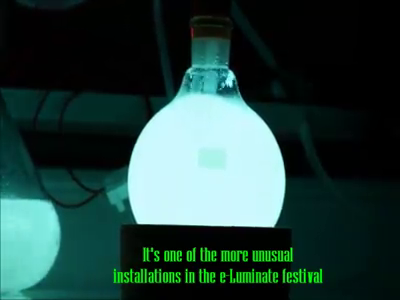
Submitted by Jenny Molloy on Thu, 11/02/2016 - 00:58
BBC Cambridgeshire features an artistic collaboration between Bernardo Pollak and Anton Kan in the Department of Plant Sciences and conceptual fashion designer Victoria Geany, inspired by a SynBio Fund supported project on bioluminescent bacteria.
View the video and interview with Anton Kan >>>
The SynBio Fund supported a project to sequence 19 bioluminescent bacteria collected from around the world to find brighter proteins for synthetic biology applications. The brightest of these is being used in a unique installation for the Cambridge eLuminate Festival, interweaving fashion and biology to create bioluminescent cloth and explore the relationship between humans and bacteria.
All are welcome to visit!
Lo Lamento
Prioress’s Room, Jesus College, Cambridge CB5 8BL
SAT 13 FEB 2016 AT 15:00 – 20:00 or SUN 14 FEB 2016 AT 15:00 – 18:00
Are we human or a living scaffold for bacteria?
Humans are constantly battling to rid ourselves and our surroundings of bacteria, even though they are a fundamental part of our being (both in number and genetic contribution) and critical for our health and survival.
Lo Lamento aims to reunify and visibly light up the connection between humanity and their bacterial selves – to offer sustenance and life to the bacteria in recognition of their thankless work within us. The installation nurtures an arresting visual and physical dialogue through the flow and glow of soft blue bioluminescent arteries pumping air and life through the piece. The centrepiece is a glowing garment, damp and alive with bioluminescent bacteria, exploring potential body-garment interactions facilitated by a biological symbiosis. Glass orbs surround the garment, filled with bioluminescent bacteria, lighting the room and the audience with a soft blue glow. The orbs are fed with tubes, a flowing and connected system of visible energy, mirroring the lungs, the bloodstream, the heart, the umbilical cord or the womb.
Collaborators:
Bernardo Pollak, PhD candidate, Department of Plant Sciences, Cambridge
Victoria Geaney, Designer and PhD candidate at the Royal College of Art
Anton Kan, PhD candidate, Department of Plant Sciences, Cambridge

